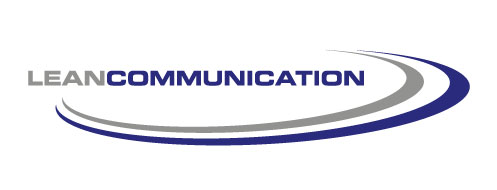The ABCs of Lean Communication
I’ve written before about applying lean manufacturing principles to business communication[1]. Although manufacturing and communication are two totally different activities, both share the goal of producing maximum value with minimum waste. In this post, I’ve tried to simplify it even further, and I’ve come up with the ABCs of lean communication.
I define lean communication as giving the other person the information they need to make a good decision, with a minimum of time and effort. Ideally, a conversation, presentation or a written communication will meet three tests:
- It must add value, leaving the recipient better off in some way.
- It must be brief, because attention spans are short and working memory is limited.
- It must be clear, so that they can glean useful ideas that they can put into practice immediately.
What does it mean to add value in communication? It’s communicating useful information that produces improved outcomes for both parties while preferably preserving the relationship. This implies three important ideas:
Lean defines value simply as anything the customer will pay for. By analogy, value in lean communication is defined as any information the listener finds useful, usually to take action or make a decision.
Second, while it’s certainly possible to communicate so that only one party improves their outcomes—such as a boss giving clear commands—it’s not sustainable in the long run. The word “both” recognizes that you have your own purposes for the communication, as you should, but you will be more effective and influential in the long run if you develop the habit of focusing on the needs, desires, and perspectives of the other person.
Third, I say “preferably” because sometimes the demands of the business or the situation will necessarily harm the relationship.
Adding value ensures that your communication is effective, but it’s also important that it be efficient, because everyone has limited time and mental resources. It has to be brief and clear.
Adding value begins with outside-in thinking, which the psychologists call perspective taking or cognitive empathy. The usefulness of your communication will be directly correlated to your understanding of the other person’s needs, wants, and existing knowledge. As Stephen Covey says, “Seek first to understand, and then be understood.”
Regardless how useful your message is, if your explanation is too long-winded it won’t add value because it won’t get heard. Being brief is your best chance at ensuring that your message will get through, because time is pressing and attention spans have withered away to almost nothing. But brevity is not just about efficiency—it also improves the quality of your message because it takes deep thinking to be able to distill your ideas into concentrated form. That’s why the paradox is that brevity takes time; you have to do the hard work so your listener does not have to. So, even though brevity is mostly about reducing waste, it’s actually another form of added value. Being brief also makes you sound much more confident and credible, which supports your purpose.
There are two approaches to cultivate the habit and discipline of brevity: BLUF and SO WHAT?
BLUF stand for “bottom line up front.” Give them the main point first, and then back it up with your logic and evidence as needed. It works for two reasons. For you, it forces you a clear conception of your own core message, which you often don’t know until you try to summarize it. For the listener, hearing the point you want them to accept helps them organize the incoming information, and it often creates its own brevity because they will stop you when they’ve hear enough.
In any communication, there is so much that could say, but only a small bit that you should say. Your mind is full of knowledge, some of which is integral to your key message, some important, and much that is interesting but irrelevant. SO WHAT? is your mental filter that ensures the first comes out, the second is available if necessary, and the last two stay in your brain.
While brevity focuses on shaving time from your message, clarity focuses on removing mental effort to understand it. Brevity and clarity can clash or cooperate. It’s possible to be too brief, because of the curse of knowledge. You don’t remember what it was like not to know what you know now, so you might leave out information that the other person needs to fully understand the situation. Besides leading to misunderstanding, the main cost to you is that when the other person does not understand your logic or your explanation, the default answer is likely to be NO, because they won’t make the mental effort to understand and they won’t admit it’s unclear to them.
But brevity and clarity can also cooperate, because stripping out unnecessary detail can make the structure of your thinking easy to follow. But just to make sure, it’s a good idea to surface your logic[2], which is making your logical argument explicit and providing signposts in your conversation. Tell them the structure of what you’re going to say, such as there are three reasons we need to do this. “The first is, the second reason is, etc.”
The second tool for clarity is the language you use. Speak plainly and directly, and don’t try to sound smart by using terms others won’t understand. It helps to make abstract concepts clearer by using concrete examples, but be careful you don’t insult the intelligence of your audience—which brings us full circle to the idea that knowing your audience is key.
Want to be known as a great communicator? It’s as simple as ABC: Add value, Briefly and Clearly.
Lean Communication: Delivering Maximum Value
Lean Communication: Reducing Waste
Lean Communication: Making Work Visible
[2] A wonderful phrase I learned from Bruce Gabrielle in his excellent book, Speaking PowerPoint.






[…] I wrote last week, lean communication is an enormously useful tool for ensuring that your communication with others […]